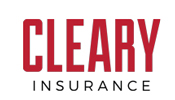Making Sense of Certificates of Insurance
Understanding The Purpose Of Certificates Of Insurance
When stores lease real estate spaces or construction firms win jobs, the party on the other end usually has a very specific set of requirements. One of the main requirements is that the tenant, contractor or borrower must show proof that he or she has adequate insurance. Copies of insurance documents may be sufficient. However, not all companies want copies of documents sitting around. Space is valuable, and most banks do not have enough room to keep such copies of originals for every customer. A very helpful substitute for document copies is a Certificate of Insurance (COI). This item is simple to create and store. Unfortunately, not all firms and insurance buyers fully understand them.
ACORD constructed the forms that are most commonly used. Their instructions show that these certificates are intended for informational purposes. When some businesses receive these certificates, they think the items are contracts. However, the certificate is simply a snapshot of insurance provisions. It does indicate that a policy exists, but it is not the document that actually provides coverage. The only document that actually provides coverage when shown is the policy itself.
Standard certificates by ACORD state that insurers must provide advance notice to holders if policies are cancelled. Although policyholders rely on these words, they do not create a legal bond between the two parties. The only thing that can obligate the companies to give advance notice is the policy’s specific provisions. Many businesses want these certificates to have specific terms, phrases or words. However, agents have legal boundaries for such requests. The only way agents can add wording to a certificate is if the listed policies contain that wording. Changes are not always allowed.
Many states prohibit agents from handing out certificates implying provisions that are not included in the policies. For example, a certificate holder may want the item to state that coverage is primary and noncontributory. However, policies that do not reflect such information cannot have certificates indicate otherwise. Agents who add language implying otherwise could be in a great deal of trouble. Only the endorsements insurers issue can change policies. If an agent issues a certificate implying a change, this is a violation of the individual’s contract with the insurer and a violation of state insurance law.
Before you sign contracts including insurance provisions, we recommend verifying you comply with the coverage requirements. While we cannot provide any legal interpretations for the contract, we can certainly review the insurance provision and provide in-depth advice about the cost and availability of any missing elements. In some cases we may need to provide you with estimates for adding additional insurance coverages or increasing current limits. We can only issue certificates after coverage is in place. If certificates are used appropriately, they are valuable business tools. However, they can cause problems when they are used incorrectly.
